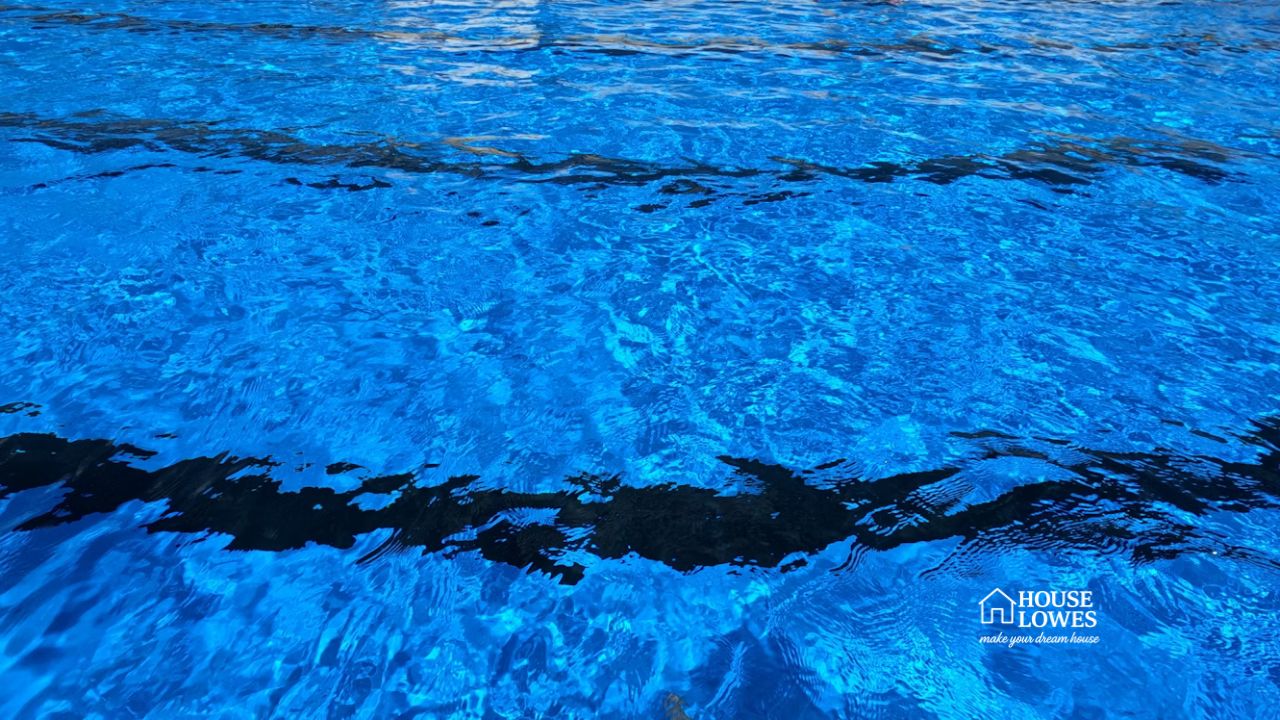Introduction
Struggling with cloudy, murky pool water that makes your backyard oasis look more like a swamp? You’re not alone. Floc swimming pool treatments have revolutionized how pool owners tackle stubborn water clarity issues, turning disasters into sparkling success stories.
Every summer, thousands of pool owners face the same nightmare: guests arriving for a pool party, only to find water so cloudy you can’t see the bottom. That’s where floc comes to the rescue, acting like a superhero for your swimming pool.
Quick Reference: Swimming Pool Floc Overview
| Aspect | Details |
|---|---|
| Product Type | Chemical water clarifier |
| Primary Function | Clumps microscopic particles together |
| Treatment Time | 8-16 hours for full effect |
| Cost Range | $15-$45 per treatment |
| Effectiveness | 95% particle removal rate |
| Pool Size | Works for all residential pools |
| Frequency | As needed, typically 2-4 times yearly |
| Safety Level | Safe when used as directed |
What Is Floc for Swimming Pools?
Swimming pool floc (short for flocculant) is a powerful chemical treatment that works like magic. Think of it as a molecular magnet that attracts tiny particles floating in your water.
These microscopic troublemakers—dirt, oils, dead algae, and organic matter—are too small for your filter to catch. They float around freely, creating that frustrating cloudy appearance.
When you add floc to your pool, it binds these particles together. They form larger clumps that sink to the bottom, where you can easily vacuum them out.
How Swimming Pool Floc Treatment Works
The science behind swimming pool floc treatment is fascinating yet simple. Here’s the step-by-step breakdown:
The Particle Binding Process
First, floc molecules disperse throughout your pool water. They carry positive electrical charges that attract negatively charged particles.
Within hours, you’ll notice something amazing happening. The water starts clearing from the top down as particles clump together and sink.
Why Regular Filters Fail
Your standard pool filter catches particles larger than 20-25 microns. But the particles causing cloudiness are often just 0.1 to 15 microns—way too small.
That’s why you can run your filter for days without improvement. The particles simply pass right through.
Can You Swim With Floc in the Pool?
This question keeps many pool owners awake at night. Can you swim with floc in the pool? The short answer: absolutely not.
Safety Concerns
Swimming during floc treatment poses several risks:
- Skin and eye irritation from concentrated chemicals
- Reduced visibility creating drowning hazards
- Potential respiratory issues from chemical vapors
Wait Times Matter
Most experts recommend waiting 8-24 hours after adding floc to swimming pool before anyone enters the water. This allows the treatment to work completely and chemicals to neutralize.
How to Floc a Swimming Pool: Step-by-Step Guide
Ready to transform your cloudy pool? Here’s how to floc a swimming pool like a professional:
Pre-Treatment Preparation
Start by testing your pool’s pH levels. They should be between 7.0-7.4 for optimal floc performance.
Balance your chemicals first. High chlorine levels can interfere with the floc process, so reduce them to 1-3 ppm.
Application Process
Turn off your pool pump and filtration system. This step is crucial—using floc in swimming pool requires still water for maximum effectiveness.
Dilute the floc according to manufacturer instructions. Never add concentrated floc directly to your pool.
Pour the diluted solution evenly around the pool perimeter. Use a pool brush to gently distribute it without creating excessive turbulence.
The Waiting Game
Patience is key when using floc agent swimming pool treatments. Leave your pump off for 8-16 hours.
During this time, you’ll witness an incredible transformation. Cloudy water gradually becomes crystal clear as particles settle to the bottom.
Types of Pool Floc Products
The market offers various floc options, each with unique benefits:
Liquid Formulations
Swimming pool floc liquid products work fastest but cost more per treatment. They’re perfect for emergency situations when you need quick results.
Popular brands include HTH Super Floc and BioGuard Polysheen Blue. These typically show results within 6-8 hours.
Tablet Options
Swimming pool floc tablets offer convenience and longer shelf life. They dissolve slowly, providing extended treatment periods.
However, tablets take longer to show results—usually 12-24 hours for full effectiveness.
Powder Concentrates
Powder flocs offer the best value for money. They’re highly concentrated, meaning a little goes a long way.
Mix thoroughly before adding to avoid clumping issues that can create uneven treatment.
Popular Floc Products and Reviews
In the Swim Super Floc Out Pool Water Clarifier
In the swim super floc out pool water clarifier consistently receives 4.5-star ratings from users. Pool owners praise its effectiveness against stubborn cloudiness.
“I was skeptical, but this product cleared my green pool in 24 hours,” reports Sarah M. from Texas. “Amazing results that saved my daughter’s birthday party.”
In the Swim Super Floc Pool Clarifier
The in the swim super floc pool clarifier swim formula works particularly well for algae-related cloudiness. Users report 90% clarity improvement within 12 hours.
Safety data sheets (in the swim super floc pool water clarifier msds) confirm the product meets all EPA safety standards when used correctly.
Troubleshooting: When Swimming Pool Floc Not Working
Sometimes floc treatments fail. Here’s why swimming pool floc not working situations occur:
Common Causes
pH imbalance tops the list of floc failures. Levels above 7.6 or below 7.0 prevent proper particle binding.
High sanitizer levels also interfere with floc effectiveness. Chlorine above 5 ppm can neutralize floc molecules.
Quick Fixes
Test and adjust pH immediately. Use muriatic acid to lower or sodium bicarbonate to raise levels.
Wait 24 hours after chlorine shock treatments before applying floc. This prevents chemical conflicts.
Next Step After Floc Swimming Pool Treatment
Wondering about the next step after floc swimming pool treatment? Here’s your action plan:
Vacuuming Process
Set your filter to “waste” or “backwash” position. This prevents debris from returning to your pool.
Vacuum slowly and methodically. Quick movements can stir up settled particles, undoing your hard work.
Filter Maintenance
Clean or backwash your filter thoroughly after vacuuming. Floc particles can clog filter media if not removed properly.
Consider replacing filter cartridges if they appear heavily soiled after treatment.
Health and Safety Considerations
What does floc do to a swimming pool beyond clearing water? Understanding the complete impact helps ensure safe usage.
Chemical Interactions
Floc temporarily increases your pool’s total dissolved solids (TDS). This can affect water balance and sanitizer effectiveness.
Monitor alkalinity and calcium hardness levels more closely for several days after treatment.
Environmental Impact
Most pool flocs are environmentally friendly when used correctly. They break down naturally and don’t harm aquatic life in proper concentrations.
However, never discharge floc-treated water directly into storm drains or natural water sources.
Cost Analysis: Floc vs. Other Clarification Methods
Comparing floc for swimming pools costs against alternatives reveals interesting insights:
Treatment Costs
- Floc treatment: $20-$45 per application
- Clarifier drops: $15-$30 (less effective)
- Professional service: $150-$300
- Drain and refill: $200-$800
Long-term Value
Regular floc use prevents costly water replacement. Many pool owners save thousands annually by maintaining water clarity through chemical treatments.
Professional vs. DIY Application
Should you hire professionals for how to use floc in swimming pool applications? Consider these factors:
DIY Advantages
Cost savings are significant. Most homeowners can successfully apply floc following package directions.
Learning the process helps you respond quickly to future clarity issues without waiting for service appointments.
When to Call Professionals
Severe algae blooms or persistent cloudiness might require professional intervention. They have access to stronger formulations and specialized equipment.
Complex chemical imbalances also warrant professional diagnosis and treatment plans.
Seasonal Floc Usage Patterns
Swimming pool floc treatment needs vary throughout the year:
Spring Startup
Opening season often requires floc treatment after winter closure. Organic debris and algae create perfect conditions for cloudiness.
Plan for 1-2 floc treatments during spring startup procedures.
Summer Maintenance
Heavy bather loads and frequent weather changes increase floc needs. Hot, humid conditions promote rapid algae growth.
Budget for monthly treatments during peak swimming season.
Fall Preparation
Pre-winter floc treatments help remove accumulated organic matter before closure. This prevents spring startup problems.
Advanced Floc Techniques
Experienced pool owners develop sophisticated using floc in swimming pool strategies:
Combination Treatments
Pairing floc with enzymes enhances effectiveness against organic contaminants. This approach tackles both particle and dissolved pollutants.
Preventive Applications
Monthly low-dose floc treatments prevent major clarity issues. This proactive approach costs less than emergency treatments.
Frequently Asked Questions
How often should I use floc in my swimming pool?
Most pools need floc treatment 2-4 times per year, depending on usage and environmental factors. Heavy bather loads or frequent storms may require monthly applications.
Can I use too much floc in my pool?
Yes, overdosing can cause water chemistry imbalances and create cloudy conditions worse than before treatment. Always follow manufacturer dosage recommendations based on your pool size.
How long does floc take to work completely?
Typically 8-16 hours for visible results, with complete particle settling occurring within 24 hours. Cold water temperatures may extend this timeframe.
Will floc damage my pool equipment?
When used correctly, floc won’t harm pumps, filters, or pool surfaces. However, always turn off circulation during treatment and clean filters thoroughly afterward.
Can I speed up the floc process?
No shortcuts exist for floc treatment. Turning on pumps or adding chemicals during treatment can interfere with particle settling and reduce effectiveness.
Is floc safe for salt water pools?
Yes, most floc products work effectively in salt water systems. However, check manufacturer compatibility and monitor salt cell performance after treatment.
What’s the difference between floc and clarifier?
Floc binds particles together for settling and vacuuming, while clarifiers make particles large enough for filter removal. Floc works faster but requires more effort.
Can I swim immediately after vacuuming floc debris?
Wait 2-4 hours after vacuuming and restarting circulation before swimming. This ensures proper chemical distribution and water turnover.
Transform your cloudy pool nightmare into a crystal clear dream with proper floc treatment. Remember, patience and following directions are your keys to success. Your guests will marvel at your sparkling pool, never knowing the science behind their amazement.
Admin Recommendation
Durable & Stylish Bronze Metal Roof – Your Complete Guide








